RESEARCH
PROJECTS
CLICK PHOTO FOR MORE



Reviving and Preserving Traditional Weaving Designs of Tribal Kinnaur District
ONGOING RESEARCH
2024-PRESENT
This participatory research project investigates handloom weaving practices of the Kinnauri Scheduled Tribes of the state of Himachal Pradesh in the Indian Himalaya. Kinnauri tribal peoples have a unique identity forged through millennia of relative isolation in their mountainous region, including well-developed cultural practices and belief systems. Traditional textile weaving is a significant part of Kinnauri culture, holding deep religious importance while particular designs carry elements of cultural identity.
Although Kinnauri weaving is alive and vibrant activity, knowledge of traditional Kinnauri weaving techniques and designs is disappearing through evolution of this art. Despite the importance of weaving tradition in Kinnaur, to date, none of the old designs and motifs have been documented or preserved. As elders pass on, a new generation of weavers takes their place, increasingly modifying designs and evolving the traditional art forms of their ancestors. Without documenting the old ways and the oral histories of master weavers, the essence of this cultural heritage may be lost
This research aims to revive and strengthen the weaving traditions of Kinnaur by documenting the knowledge held by master weavers and preserving representative examples of their work, specifically the older designs. This project establishes the necessary foundation for subsequent planned efforts to facilitate the creation of a weaving cooperative, a museum, and influencing local policy focused on supporting traditional Kinnauri textile knowledge.

Social Implications of Climate Change
ONGOING RESEARCH
2018-PRESENT
The initial phase of this ongoing project was funded through the Fulbright-Nehru Academic and Professional Excellence Award. This research project investigates the social implications of climate change in the Kinnaur District, a high elevation apple-growing region in the state of Himachal Pradesh in the Indian Himalaya.
This longitudinal research seeks to understand the adaptive capacity of Kinnauris to climate change, with an initial emphasis on gender. The project employs a political ecology and feminist political ecology framework and contributes to the debates and literature on risk perception and adaptation of rural and indigenous mountain communities to climate change.
Some of the questions driving this research include:
1) What strategies are being used by Kinnauris to cope with and adapt to climate change?
2) How do Kinnauris perceive risk from climate change and extreme weather?
3) How are patterns of risk and opportunity shifting in Kinnaur? Specifically, how do these changes affect different categories of social strata, i.e. gender, age, caste, socioeconomic status?
4) Are Kinnauris taking advantage of their current economic success to protect against long-term environmental risks and increase their resiliency?
5) What strategies, if any, are being used to diversify and secure livelihoods?
This research provides a deeper understanding of the social implications of climate change adaptation in Kinnaur, and ultimately, draws lessons for how mountain regions in general could successfully adapt to change and enhance their resiliency.
Kinnaur is a useful indicator of the consequences of climate change in mountain regions, where rapidly shifting environmental conditions threaten livelihoods, potentially resulting in widespread economic harm.
Improved adaptation strategies may safeguard against disruption of livelihoods and ecosystem services and thus enhance community resilience to climate change and other environmental disturbances.

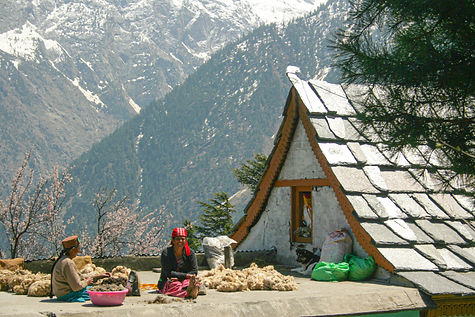

Declining Fraternal Polyandry
& Land Implications
ONGOING RESEARCH
2017-PRESENT
This ongoing research investigates the link between declining fraternal polyandry and land ownership in Kinnaur, Western Himalaya.
Kinnauri fraternal polyandry, where a woman marries a set of brothers, is a rare form of marriage, but a common traditional practice. Polyandry is a complex cooperative strategy that has alleviated uncertainty in a harsh mountain environment.
In Kinnaur, a high elevation region with land, resource, and labor scarcity, flexible relationships and strong social networks have reduced risk and supported livelihoods.
Declining polyandry is changing land ownership and contributing to land partitioning in Kinnaur. Smaller land units may possibly have significant long-term economic consequences, i.e. inefficiency of production supporting individual households. Shifting marital customs reflect wider social transitions driven by increased exposure to the broader market and modernization.
Some findings from this research effort have been published in the journal Human Ecology: Rahimzadeh, A. (2020). Fraternal Polyandry and Land Ownership in Kinnaur, Western Himalaya. Human Ecology. doi:10.1007/s10745-020-00181-1


Socio-economic and Environmental Changes Leading to Chilgoza Pine Nut Decline in Kinnaur
ONGOING RESEARCH
2017-PRESENT
Pinus gerardiana, or chilgoza pine, has played a significant socioeconomic role for the Kinnauri Tribal Peoples in the Indian state of Himachal Pradesh. Chilgoza is a native species of pine to Kinnaur and other small pockets in Western Himalaya.
Until the 1950s, when Kinnaur was dependent on barter and subsistence, chilgoza pine nuts provided the only means of monetary revenue. Pine nuts were a vital commodity with which Kinnauris bartered for essential goods. While no longer central to the barter economy, pine nuts offer a small sum of supplementary income and remain an important part of Kinnauri identity expressed in religious and cultural functions. Moreover, oil-rich pine nuts provide a source of nourishment, especially during long winter months. As the harvest rapidly declines, however, the role of chilgoza in the Kinnauri economy and culture is threatened. Today, widespread cultivation of apples is gradually taking the place of pine nuts as a valued commodity.
This ongoing longitudinal ethnographic research is focused on the socio-economic and environmental changes leading to
the decline in chilgoza pine nut production. As commercial
apple cultivation gains prominence, the traditional collective harvesting and distribution practices of chilgoza are losing importance. Contemporary harvesting practices contribute to long-term damage of the tree and therefore decline in seed production and regeneration. Climate change and a general reduction in winter snowfall have also been diminishing production. Chilgoza decline can potentially reduce the diversity of the Kinnauri economy, possibly placing Kinnauris at risk, as they become further dependent on a single cash crop, apples.
Some findings from this research effort have been published in the following:
-
Rahimzadeh, A. (2020). Socio-economic and Environmental Implications of the Decline of Chilgoza Pine Nuts of Kinnaur, Western Himalaya. Conservation and Society doi:10.4103/cs.cs_19_17
-
Rahimzadeh, A. (2020). From Vanishing Pine Nuts to Expanding Apple Trees: A Story of Changing Tribal Culture in the Himalaya. Newfound (October).
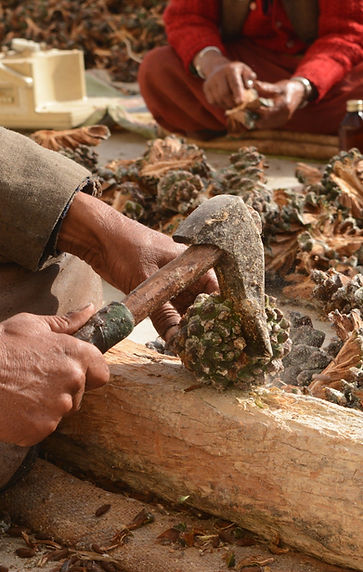



Mountain Livelihoods in Transition: Constraints & Opportunities in Kinnaur, Western Himalaya
PhD RESEARCH
2008-2016
This dissertation research, funded by a Fulbright award, investigated the transformation of the tribal District of Kinnaur in the Indian Himalaya. Dr. Rahimzadeh examined Kinnauri adaptation to political, economic, environmental, and social events of the last seven decades, including state intervention, market integration, and climate change. Her ethnographic research found that Kinnaur’s transformation and current economic prosperity have been chiefly induced by outside forces, creating a temporary landscape of opportunity. State-led interventions including land reform and a push to supplement subsistence agriculture with commercial horticulture initiated a significant agrarian transition beginning with India’s Independence.
Analyzing climate change and its consequences on Kinnaur, Dr. Rahimzadeh’s research makes a valuable contribution to the field by showing how climate change may provide a temporary landscape of opportunity for once-marginalized peoples. Her research illustrated how climate change is shifting land use practices and changing patterns of agricultural production. Formerly non-arable land in the high-altitude zone is being placed under apple production and contributing to growing prosperity, albeit temporary. Kinnauri livelihood diversity has decreased with growing dependence on one dominant cash crop, resulting in vulnerability to fluctuating markets and weather conditions.
Livelihood diversification may provide important long-term protection for Kinnauri prosperity.
Her research further examined the historical implications of different land reform programs and their repercussion on land allocation to landless Kinnauris. Her findings suggested that despite the initial inequitable distribution of land, landless Kinnauris predominantly became landowners. She also illustrated how other socio-economic measures, including the construction of a strategic national highway, access to wage labor, provision of government jobs and government promotion of commercial apple production, all converged to change the socio-economic dynamics of Kinnaur leading to a currently prosperous region.
Research findings from this work resulted in two publications in peer reviewed journals:


Van Gujjar Nomadic Pastoralists
& Biodiversity Conservation
PRELIMINARY RESEARCH
2009
As a University of California Human Rights Fellow, Dr. Rahimzadeh conducted preliminary research on the consequences of the 1983 creation of Rajaji National Park (RNP) in the foothills of the Indian Himalaya, on the local Van Gujjar nomadic pastoralists.
Her research sought to understand how top-down conservation policies have contributed to the marginalization of the Van Gujjars by displacing them from access to natural resources and excluding them from decision-making processes.
Findings from this research were presented at the UC Human Rights Conference in 2009 and at the American Association of Geographers in 2010.
Additionally, a working paper was developed from its results.
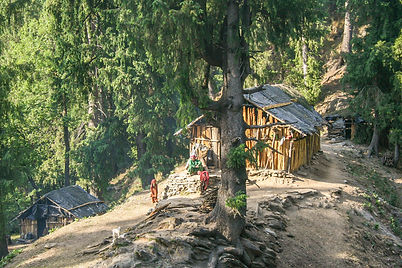

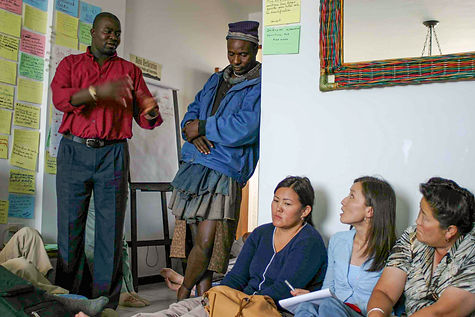
The World Alliance of Mobile Indigenous Peoples (WAMIP)
2003-2008
Dr. Rahimzadeh was involved with WAMIP, an international Non-Governmental Organization founded by and working on behalf of nomadic peoples around the world, from its inception at the 5th IUCN (World Conservation Union) World Parks Congress in Durban, South Africa in 2003, and served as the Executive Secretary of the organization for five years.
With the help of IUCN Commission on Environmental Economic and Social Policy, she and her team assisted and arranged for the participation of about 30 representatives of mobile indigenous peoples from around the world at IUCN’s 5th World Parks Congress.
After a preparatory meeting, the participants presented a set of recommendations, 5.27 entitled “Mobile Indigenous Peoples and Protected Areas,” to the World Parks Congress.
She help build the organization, from capacity building of members, to projects and grants which advocated for mobile indigenous peoples globally.
WAMIP also conducted participatory research with pastoralists on livelihoods, rights, and resource management strategies.
The result of this work has been published in several IUCN CEESP Briefing Notes on Mobile Peoples and Conservation.
She also helped coordinate capacity building workshops and events including WAMIP’s First General Meeting in Malaysia (2004), the IUCN World Conservation Congress in Thailand (2004), the UN Permanent Forum on Indigenous Issues in New York (2006 and 2007), The World Gathering of Nomadic and Transhumant Pastoralists, and the First WAMIP Congress in Spain (2007).

Iran – IUCN (World Conservation Union)
2003-2005
As the program officer for the Sustainable Livelihoods Working Group of the IUCN (World Conservation Union) Commission on Environmental, Economic and Social Policy (CEESP), Dr. Rahimzadeh participated in integrated conservation and development projects that included a significant component of field research.
Two of the main projects under study included the Kuhi Pastoralist Project and the Conservation of the Asiatic Cheetah.
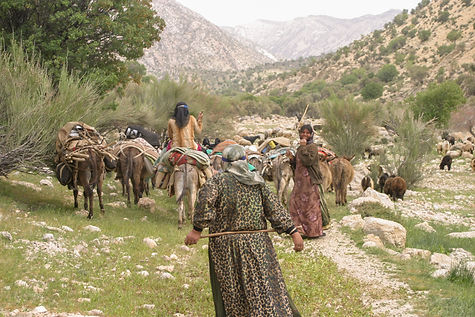
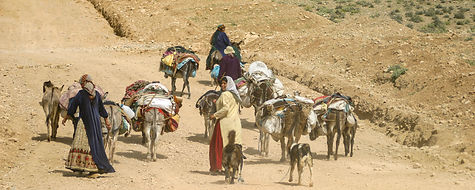
Kuhi Pastoralist Project
An action research project with the Kuhi Sub-tribe of the Qashqai Pastoralists of Iran, focused on integration of livelihood sustainability and land conservation.
The research team:
a) explored issues of concern to the Kuhi;
b) examined their social structures and decision-making processes; and
c) investigated the tribe’s range management practices and perception toward conservation.
This research laid the foundation to help the Kuhi revitalize their social organization and culture, manage their common property resources, and develop additional sources of income.
Dr. Rahimzadeh participated in research, participatory group workshops, and documentation of key elements of the tribe’s resource management and culture.
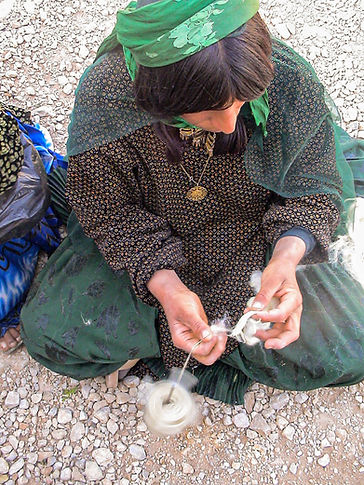
Conservation of
the Asiatic Cheetah
This multi-disciplinary project aimed at preserving the endangered Asiatic Cheetah in Iran.
The project included participatory research on the needs and desires of local pastoralists and encouraged their active participation in conservation efforts.
The research included identifying community problems and priorities, and resource mapping.

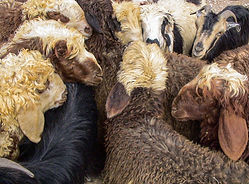
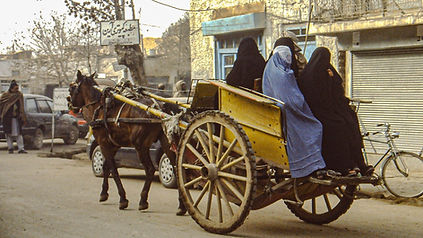
Afghanistan:
Family Planning
Project
2002-2003
A reconnaissance mission to Iran and Afghanistan to assess the level of family planning services available to women in the Afghan province of Herat, and the feasibility of offering formal assistance modeled on Iran’s program.
The research trip consisted of visits to hospitals, clinics, pharmacies, government agencies and women’s NGOs in both countries.

Tajikistan:
Gender Attitudes & Violence Against Women
UNIFEM 2001
Dr. Rahimzadeh’s work with UNIFEM (United Nations Development Fund for Women) in Dushanbe, Tajikistan included research on trafficking of women and young girls – a significant problem in Central Asia.
The results included an educational booklet for Tajik women focused on self-protection.
She also traveled with a research team to rural villages conducting interviews, observation, and facilitating seminars on gender attitudes and violence against women.
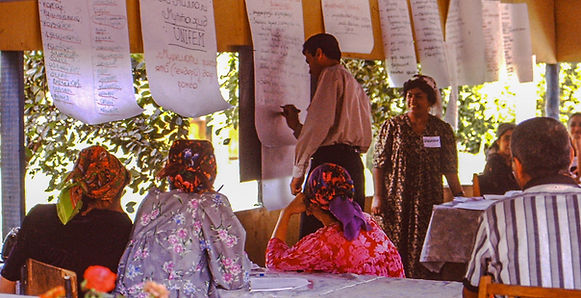

.jpg)

.jpg)
.jpg)
.jpg)
.jpg)
.jpg)
_.jpg)
.jpg)
.jpg)